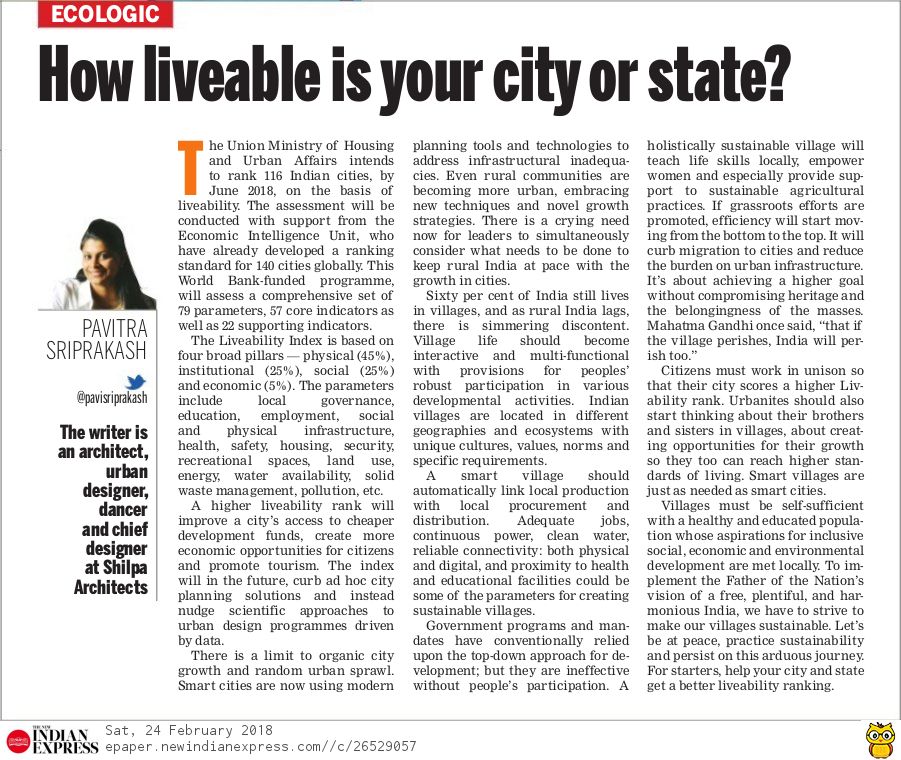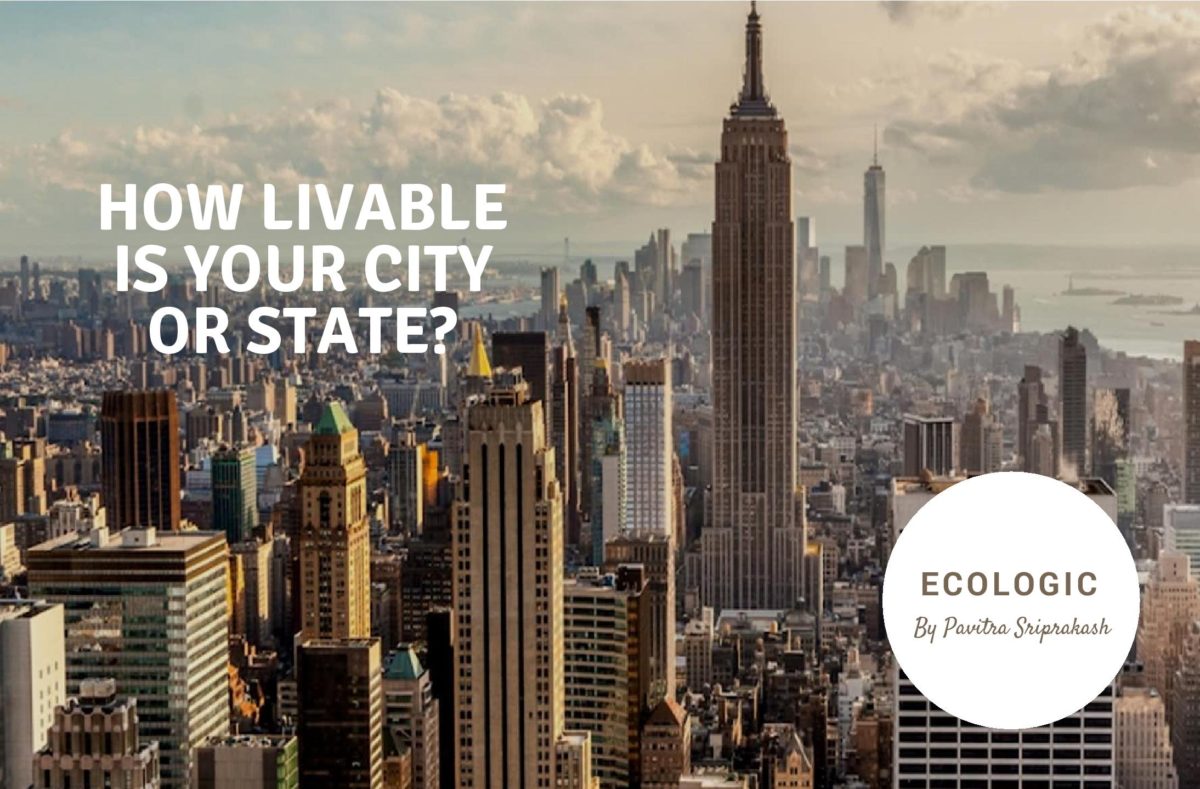February 24th 2018, New Indian Express: ECOLOGIC- Pavitra Sriprakash, the Chief Designer and Director of Shilpa Architects writes on the livability index, a measure used to gauge living conditions in cities. The article also addresses the importance of developing villages.
Full Article
The Union Ministry of Housing and Urban Affairs intends to rank 116 Indian cities, by June 2018, on the basis of liveability. The assessment will be conducted with support from the Economic Intelligence Unit, who have already developed a ranking standard for 140 cities globally. This World Bank-funded programme, will assess a comprehensive set of 79 parameters, 57 core indicators as well as 22 supporting indicators.
The Liveability Index is based on four broad pillars — physical (45%), institutional (25%), social (25%) and economic (5%). The parameters include local governance, education, employment, social and physical infrastructure, health, safety, housing, security, recreational spaces, land use, energy, water availability, solid waste management, pollution, etc.

A higher liveability rank will improve a city’s access to cheaper development funds, create more economic opportunities for citizens and promote tourism. The index will in the future, curb ad hoc city planning solutions and instead nudge scientific approaches to urban design programmes driven by data.
There is a limit to organic city growth and random urban sprawl. Smart cities are now using modern planning tools and technologies to address infrastructural inadequacies. Even rural communities are becoming more urban, embracing new techniques and novel growth strategies. There is a crying need now for leaders to simultaneously consider what needs to be done to keep rural India at pace with the growth in cities.
Sixty per cent of India still lives in villages, and as rural India lags, there is simmering discontent. Village life should become interactive and multi-functional with provisions for peoples’ robust participation in various developmental activities. Indian villages are located in different geographies and ecosystems with unique cultures, values, norms and specific requirements.
A smart village should automatically link local production with local procurement and distribution. Adequate jobs, continuous power, clean water, reliable connectivity: both physical and digital, and proximity to health and educational facilities could be some of the parameters for creating sustainable villages.
Government programs and mandates have conventionally relied upon the top-down approach for development; but they are ineffective without people’s participation. A holistically sustainable village will teach life skills locally, empower women and especially provide support to sustainable agricultural practices. If grassroots efforts are promoted, efficiency will start moving from the bottom to the top. It will curb migration to cities and reduce the burden on urban infrastructure. It’s about achieving a higher goal without compromising heritage and the belongingness of the masses. Mahatma Gandhi once said, “that if the village perishes, India will perish too.”
Citizens must work in unison so that their city scores a higher Livability rank. Urbanites should also start thinking about their brothers and sisters in villages, about creating opportunities for their growth so they too can reach higher standards of living. Smart villages are just as needed as smart cities.
Villages must be self-sufficient with a healthy and educated population whose aspirations for inclusive social, economic and environmental development are met locally. To implement the Father of the Nation’s vision of a free, plentiful, and harmonious India, we have to strive to make our villages sustainable. Let’s be at peace, practice sustainability and persist on this arduous journey. For starters, help your city and state get a better liveability ranking.
About the author
Pavitra Sriprakash (@pavisriprakash), the Director and Chief Designer of Shilpa Architects, is an Architectt, Urban Designer, Dancer and Artist. She writes a weekly sustainability column for The New Indian Express titled ECOLOGIC.



